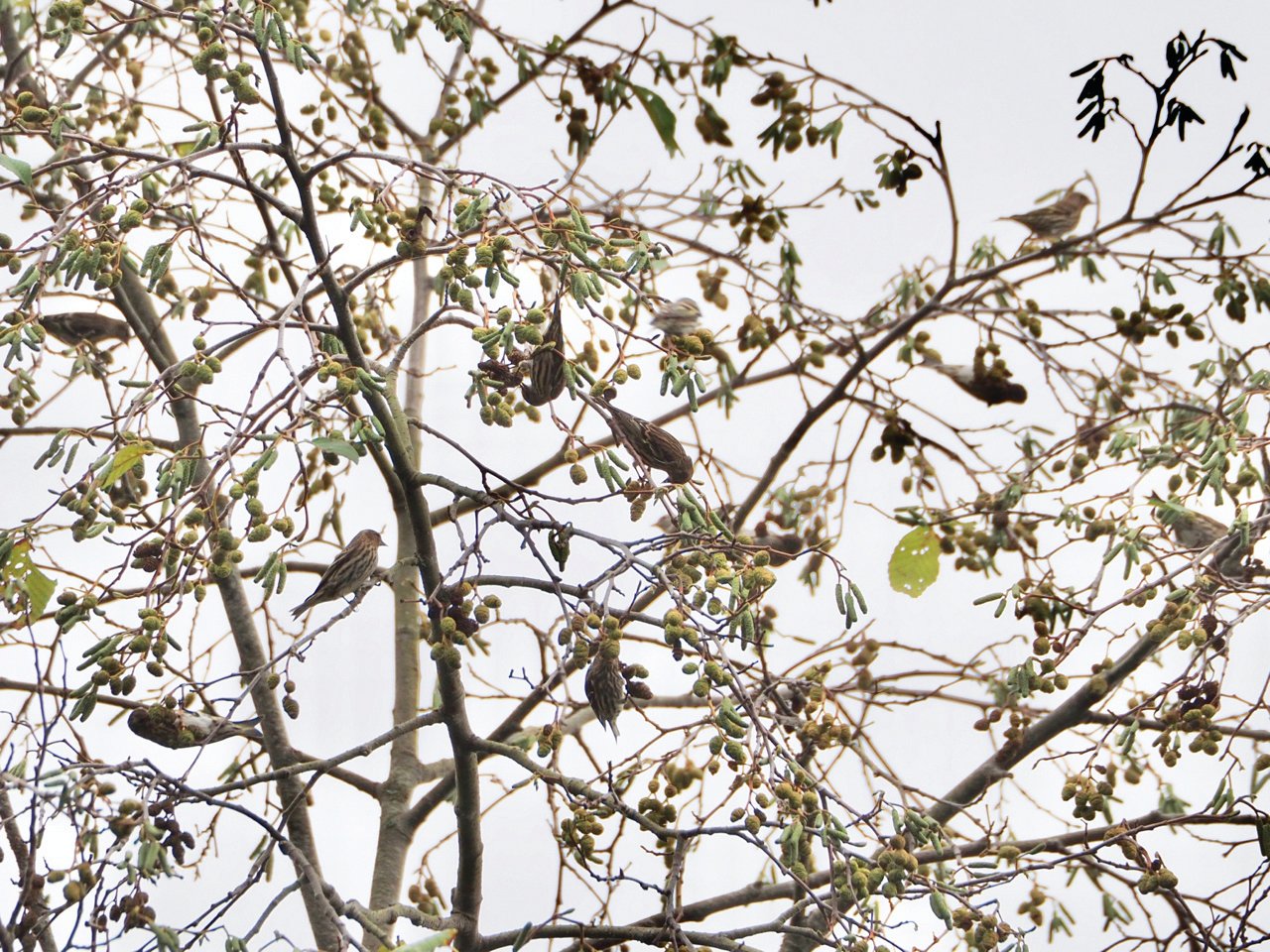If you like to keep bird feeders near your home, chances are you’ve seen pine siskins visit all year round. This year, birdwatchers across North America have documented record numbers of these …
This item is available in full to subscribers.
We have recently launched a new and improved website. To continue reading, you will need to either log into your subscriber account, or purchase a new subscription.
If you had an active account on our previous website, then you have an account here. Simply reset your password to regain access to your account.
If you did not have an account on our previous website, but are a current print subscriber, click here to set up your website account.
Otherwise, click here to view your options for subscribing.
* Having trouble? Call our circulation department at 360-385-2900, or email our support.
Please log in to continue |
|

If you like to keep bird feeders near your home, chances are you’ve seen pine siskins visit all year round. This year, birdwatchers across North America have documented record numbers of these small, striped, energetic finches chittering constantly as they travel. Flocks of up to 2,000 birds have been observed.
In Port Townsend, nearly two in 10 birds recorded during the 2020 Christmas Bird Count (CBC) by the Admiralty Audubon Society were pine siskins.
Twelve teams of birders observed 119 different species during the annual census for our area. Out of 23,735 individual birds observed on CBC day (Dec. 19th this season), 4,040 were siskins. This nearly tripled the highest historic siskin count for our area of 1,488 siskins in 2001.
Though sightings of large flocks can be inspiring, an unfortunate consequence of hundreds of birds gathering to feast at feeders is that the spread of fatal avian disease has increased. The Washington Department of Fish and Wildlife recommends that people take their feeders down for a few weeks to encourage birds to disperse and forage on natural food sources, thereby avoid crowding at infected feeders.
“They’re not here because of the feeders. They‘re here because it’s a good year for Douglas fir and red alder seeds,” explains Monica Fletcher, Conservation and CBC Chair for Admiralty Audubon of East Jefferson County.
Pine siskins are well known for wild swings in populations and extremely sporadic winter ranges. The record low for this species in the local CBC was just five birds in 2013. This was not an anomaly for the region. Other counts around Puget Sound were similarly low that year, just as they are also breaking population records this winter.
A sudden upsurge in numbers is known as an irruption, and is part of the natural cycle of many bird species that respond to variations in seed and fruit production in breeding and wintering ranges. For siskins, bumper crops of conifer seeds, especially spruce and Douglas fir in our area, influence their winter flocking behavior and migrations. Alder and birch seeds are also important winter foods for siskins and other small birds. Combined with reproductive success in their broader breeding range further north, huge variations in populations occur over the decades.
A good year for siskins can also be an excellent year for Cooper’s hawks and other bird predators. If you notice a small pile of feathers on the ground or feathers drifting out of the trees, chances are there is a happy hawk nearby. Hawks and cats will often stalk prey near feeders, where their chances of snatching a bird for dinner can be higher.
In their January newsletter, the Admiralty Audubon chapter offers tips for bird feeder management that are wise practices all year round, not just during this particular outbreak of salmonellosis.
“The most humane advice seems to be that if you want to use feeders, just keep your feeders and water sources as clean as possible, cleaning them frequently with soap and water followed by a dilute chlorine bleach rinse. Don’t use platform feeders that allow bird feces to mix with seed and transmit disease. Clean up frequently under your feeders so that birds don’t forage for dropped seed that may be contaminated.”
“It would be better for them if we all had gardens full of native plants with seeds and fruits available,” they add. “Consider planting a few seed- and fruit-bearing native plants in your landscape for the benefit of our feathered friends.”
While feeders provide humans with an easy way to enjoy seeing birds close to home, birds prefer natural food sources. Feeders can be supplementary, but the quality of natural habitat is most important for their long-term health and reproductive success.
Learn more about feeder management at the Washington Department of Fish and Wildlife website: https://wdfw.wa.gov/news/help-protect-wild-birds-deadly-salmonellosis.
For suggestions on how to make your landscape a natural buffet for birds and other wildlife, check out this Audubon Society website: https://www.audubon.org/PLANTSFORBIRDS.
(Katherine Darrow writes for The Leader as a representative of the Olympic Peninsula Chapter of Washington Native Plant Society. Learn more at
www.wnps.org.)